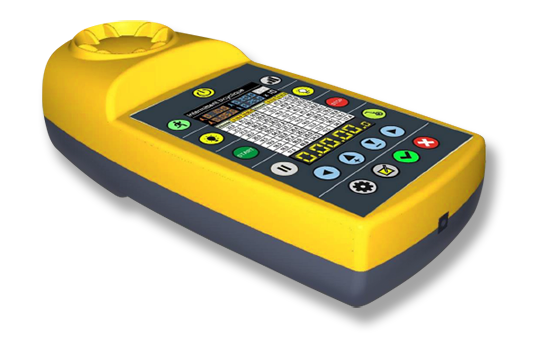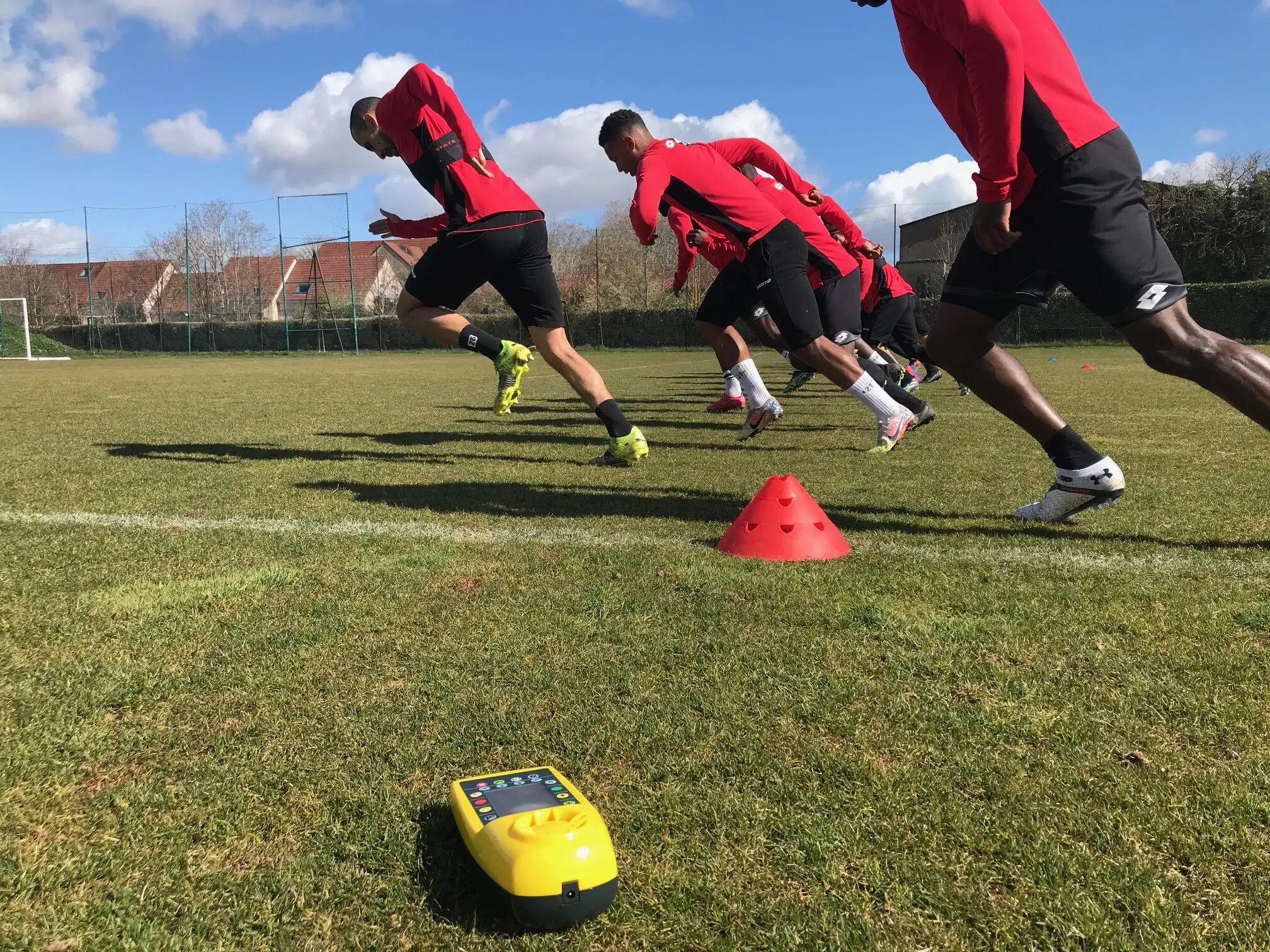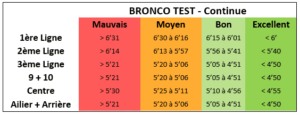1.Bronco test with SportBeeper
Bronco test, widely recognized as a test of aerobic endurance, is an essential test in rugby. Initially popularized in the southern hemisphere, the test has only been available in the northern hemisphere for a few years. It focuses on players’ endurance and aerobic capacity, crucial qualities for maintaining a high level of performance throughout a demanding rugby match.
The Bronco test requires little equipment, limited to an odometer to measure distances and studs to mark turning points. Players must cover a series of predetermined distances, usually in the form of sprints and long-distance runs, in record time. These distances may vary according to the level of competition and the specific requirements of the team.
The results of the Bronco test provide coaches and players with valuable information on their physical condition and their ability to maintain a sustained effort over prolonged periods. This data can be used to identify areas for improvement and to design appropriate training programs to enhance players’ endurance and stamina.
2.Test procedure (continuous) :
The Bronco test, a must for assessing the endurance of rugby players, features a rigorous structure. The participants are confronted with a series of round-trips over precise distances, with little or no rest intervals, thus putting their endurance to the test.
For this test, studs are placed at 20-meter intervals, up to a total distance of 60 meters. Participants must run back and forth for 20 meters, then 40 meters, and finally 60 meters, repeating this sequence five times without interruption. This is a continuous effort challenge, where athletes must maintain a steady pace despite increasing fatigue.
By the end of the test, each participant will have covered a total of 1,200 meters. The result is determined by the total time taken to complete this distance, reflecting the player’s endurance and aerobic capacity.
Here are some test results:
- Beauden Barrett (New Zealand international rugby player) completed the test in 4 minutes and 10 seconds in 2020.
- Jordie Barrett (brother of Beauden Barrett) took 4’24 to complete the test.
- Baptise Couilloud (LOU Rugby’s French scrum-half) did it in 4′ 29″.
These results illustrate the remarkable fitness of these top-level rugby players, while highlighting the importance of the Bronco test in assessing endurance and athletic performance in this demanding sport.
3. Calculating maximum aerobic speed
It is also possible to calculate maximum aerobic speed using this test. The calculation of the latter depends on the player’s weight, since it varies if the player weighs more or less than 100 kg. The calculation is as follows
if weight < 100 kg: VMA (m/s) = 1200 / (running time – 20.3)
if weight > 100 kg: VMA (m/s) = 1200 / (running time – 29)
Tip: to convert VMA into km/h, simply multiply by 3.6.
In its intermittent version, the Bronco test offers a more faithful representation of the effort required during a rugby match. Participants must complete a block of courses in 90 seconds. If a player completes the block in less than 90 seconds, the remaining time is used as a recovery period before the start of the next block.
This configuration better reflects the characteristics of the game of rugby, where players are subjected to periods of intense activity followed by short recovery periods. This approach makes it possible to assess athletes’ ability to manage changes in pace and maintain sustained effort despite breaks.
However, this method may disadvantage those who take longer to complete a block. These players will have less recovery time between successive blocks, which may compromise their ability to fully recover and maintain performance throughout the test.
Despite this potential disadvantage, the Intermittent Bronco Test remains a valuable tool for assessing the endurance of rugby players in conditions closer to the reality of the game.
The Bronco test is programmable on the sportbeeper pro. Simply select the timer and program :
- interval time: 1 minute 30
- number of intervals: 5
- pause time: 0



 To see a video:
To see a video: